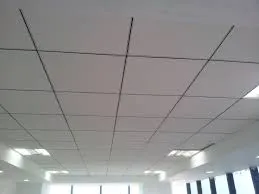- Afrikaans
- Albanian
- Amharic
- Arabic
- Armenian
- Azerbaijani
- Basque
- Belarusian
- Bengali
- Bosnian
- Bulgarian
- Catalan
- Cebuano
- Corsican
- Croatian
- Czech
- Danish
- Dutch
- English
- Esperanto
- Estonian
- French
- German
- Greek
- Hindi
- Indonesian
- irish
- Italian
- Japanese
- Korean
- Lao
- Malay
- Myanmar
- Norwegian
- Norwegian
- Polish
- Portuguese
- Romanian
- Russian
- Serbian
- Spanish
- Swedish
- Thai
- Turkish
- Ukrainian
- Uzbek
- Vietnamese
oct. . 21, 2024 18:25 Back to list
Ceiling Access Hatch for Plasterboard Installation and Maintenance Solutions
Understanding Plasterboard Ceiling Hatches A Functional Addition to Your Home
When it comes to home design and functionality, every element plays a crucial role, particularly in maximizing space and accessibility. One often-overlooked feature is the plasterboard ceiling hatch. Whether you are building a new home, renovating, or simply looking to enhance accessibility to your attic or above-ceiling areas, understanding the purpose, installation, and benefits of a plasterboard ceiling hatch can be invaluable.
What is a Plasterboard Ceiling Hatch?
A plasterboard ceiling hatch is an access point, typically created in ceilings composed of plasterboard (also known as drywall or gyprock). These hatches provide convenient entry to lofts, attics, or ducts located above the ceiling without the need for a full ceiling demolition. They can be essential for maintenance, storage, or even hiding away unsightly utilities, such as pipes and wiring, while still allowing easy access when necessary.
Benefits of Installing a Plasterboard Ceiling Hatch
1. Enhanced Accessibility One of the primary benefits of a plasterboard ceiling hatch is that it enhances accessibility. Homeowners often need to reach ductwork, electrical systems, or plumbing that runs through the ceiling. Instead of having to cut into the plasterboard or significantly disrupt the ceiling structure, a hatch allows for quick and easy access.
2. Maximizing Storage In many homes, especially those with limited square footage, every inch of space counts. Attics can serve as excellent storage areas for seasonal items, old furniture, or just things you do not use regularly. A ceiling hatch provides a secure and simple way to utilize this space to its fullest potential.
3. Aesthetic Appeal While functionality is essential, aesthetics should not be overlooked. Modern plasterboard ceiling hatches can blend seamlessly with the ceiling, maintaining the overall design while still serving their purpose. Various styles and finishes are available, allowing homeowners to choose options that best fit their interior decor.
4. Cost-Effectiveness Installing a plasterboard ceiling hatch can be a cost-effective solution for homeowners. Instead of expansive renovations or the installation of permanent staircases to gain loft access, a hatch allows homeowners to keep expenses low while still ensuring function.
5. Safety In some instances, ceiling hatches can provide a necessary escape route in emergencies. Enabling quick access to loft spaces, they can be vital for evacuations or accessing essential emergency equipment stored in the attic.
plasterboard ceiling hatch

Installation Process
The installation of a plasterboard ceiling hatch is relatively straightforward but should be approached with care, especially if you're unfamiliar with DIY tasks. Here’s an outline of how the process typically works
1. Planning the Location Choose a spot that allows for safe access to the attic or space above. Ensure it is free of obstructions like beams or ductwork.
2. Measuring and Cutting Measure the hatch size according to the available access kit and mark the dimensions on the ceiling. Cut out the plasterboard carefully to create the opening.
3. Installing the Frame Most ceiling hatches come with a frame that secures the hatch in place. This frame is installed within the cut-out space.
4. Fitting the Hatch Door Once the frame is secure, install the hatch door. Many hatch doors are designed with lightweight materials and can easily open up or down.
5. Finishing Touches Finally, finish the installation by taping and mudding the edges to create a seamless look. Paint over as necessary to match the ceiling color.
Conclusion
In summary, a plasterboard ceiling hatch is a functional and aesthetic addition to any home. It not only facilitates easy access to typically hard-to-reach spaces but also reinforces the efficient use of home environments. Whether considering a new build or renovation, integrating a plasterboard ceiling hatch can significantly enhance your home’s functionality and support your lifestyle needs. Don't underestimate the power of this small but essential feature!
-
Transform Interiors with PVC Gypsum Ceiling: A Stylish, Durable, and Moisture-Resistant SolutionNewsMay.19,2025
-
The Smart Interior Upgrade: Discover the Durability and Versatility of Gypsum Ceiling Access Panel SolutionsNewsMay.19,2025
-
The Smart Choice for Interior Design: Discover the Value of PVC Gypsum Ceiling SolutionsNewsMay.19,2025
-
Mineral Fiber Ceiling Tiles: The Smart Blend of Performance and AestheticsNewsMay.19,2025
-
Mineral Fiber Ceiling Tiles: The Superior Choice Over Gypsum for Sound and Fire SafetyNewsMay.19,2025
-
Mineral Fiber Ceiling Tiles: Eco-Friendly Strength and Style for Every CeilingNewsMay.19,2025







